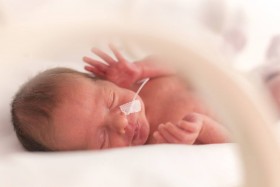Hypothermia Therapy & Birth Injuries

When a child is injured during or shortly after birth, treatment options for the injury depends on the specific type of injury and how severe the injury is. In cases when a child experiences a lack of oxygen, leading to hypoxic ischemic encephalopathy (HIE), one treatment for that condition is known as hypothermia therapy. While hypothermia is something people should generally avoid, in cases of HIE, reducing the baby’s body temperature for a period of time can help prevent damage from spreading throughout the brain.
HIE is a type of brain injury caused when a child’s brain doesn’t receive enough oxygen during delivery. When this occurs, the brain is damaged at two different points in time: during the initial loss of oxygen and when blood flow returns to the injured part of the brain. Currently, there is no cure for HIE, but if hypothermia therapy is administered right away, it can reduce the damage it causes.
For hypothermia therapy to be the most beneficial, it needs to be administered within six hours of the injury occurring. However, some research suggests it may also be beneficial if given within 24 hours. During hypothermia therapy, the child’s body is reduced to somewhere in the range of 92 and 94 degrees Fahrenheit, either through a cooling cap or a full-body cooling system, for 72 hours. Doing this helps prevent damage from being caused by the stage of HIE caused by blood returning to the brain.
During hypothermia therapy, the child’s metabolism is slowed down so that blood does not return to the brain too quickly. If blood returns to the brain too quickly, it can cause more extensive damage. It also gives brain cells more time to recover. Once hypothermia therapy is completed, the child’s body temperature is gradually brought back up to a normal temperature.
If hypothermia therapy would be a suitable treatment for a child, it’s very important that doctors begin treatment as quickly as possible. If a doctor doesn’t act quickly enough to begin treatment, the child could be at an increased risk for issues like cerebral palsy, epilepsy, cognitive difficulties, and developmental delays.
When administered quickly, hypothermia therapy can be an effective way to prevent damage from HIE. However, some children may need additional treatment beyond hypothermia therapy. Depending on the exact symptoms a child is having, there are several different types of treatment that can help manage the effects of HIE, including physical therapy, behavioral therapy, speech therapy, and occupational therapy.
If your child was impacted by HIE and hypothermia therapy isn’t administered as it should be or if the child is dealing with long-term effects from the injury, call a birth trauma lawyer as soon as possible. The lack of oxygen that leads to HIE can be caused by many different things, but it’s often caused by a doctor’s negligence. Birth trauma cases can be very complicated and it’s only natural to have a lot of questions about your situation. A lawyer will be able to help answer all your questions and can work with you to understand your legal options.
At the Law Offices of Goodwin & Scieszka, our birth trauma lawyers have helped many people in Michigan who have been in your shoes. Contact us today for help with your case.






